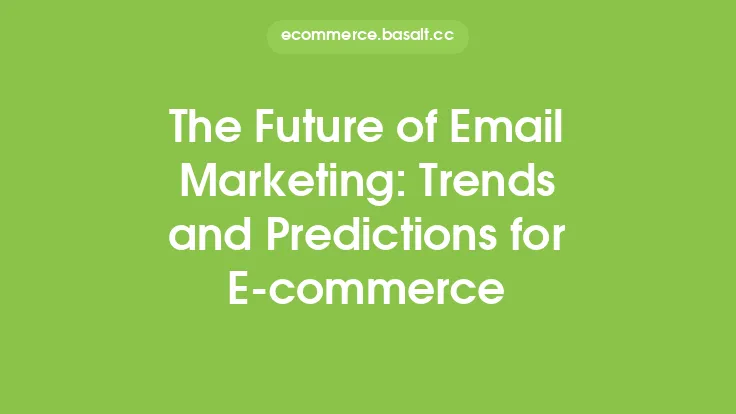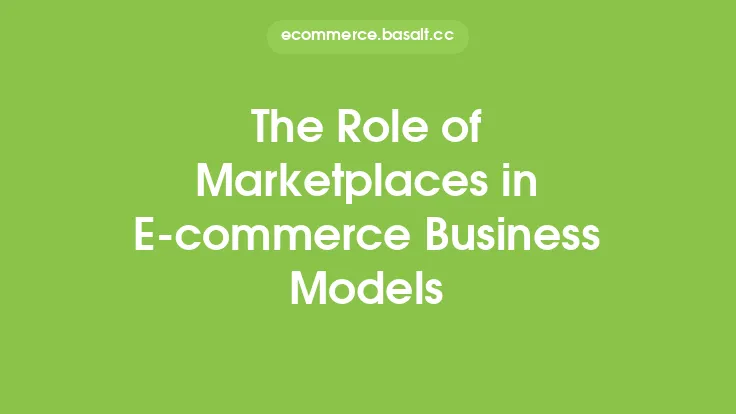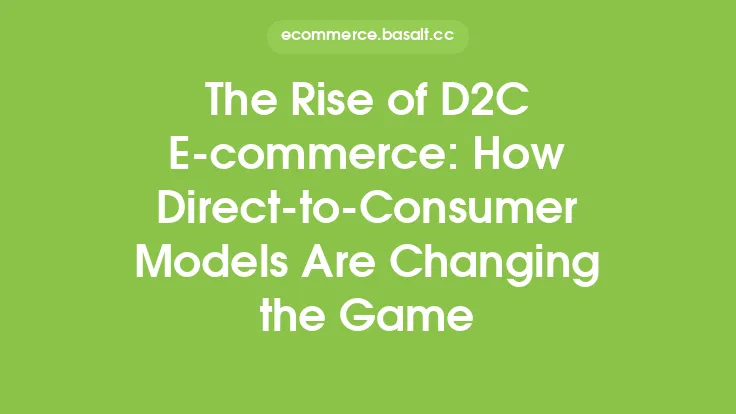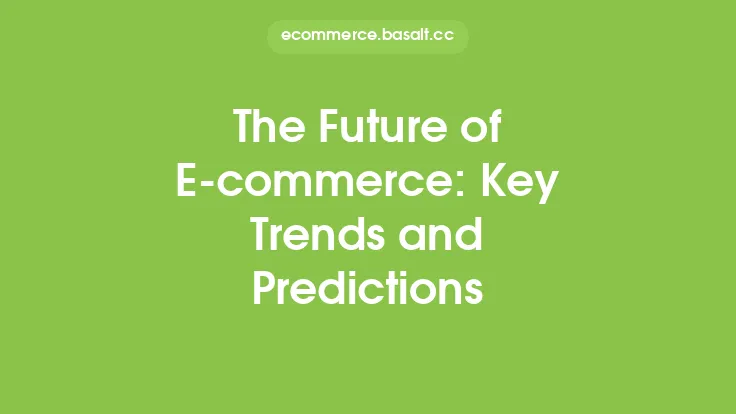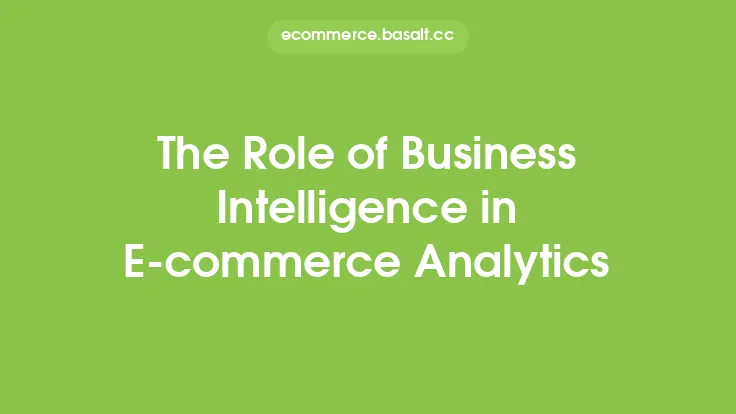The e-commerce landscape is constantly evolving, driven by advances in technology, changing consumer behaviors, and innovative business models. As the industry continues to grow and mature, it's essential for businesses to stay ahead of the curve and adapt to emerging trends and models. In this article, we'll explore the future of e-commerce, highlighting key trends and business models that are shaping the industry.
Introduction to Emerging E-commerce Business Models
Emerging e-commerce business models are redefining the way companies operate, interact with customers, and generate revenue. These models are often characterized by their focus on sustainability, customer experience, and flexibility. Some of the key emerging e-commerce business models include peer-to-peer marketplaces, online-to-offline (O2O) commerce, and experiential e-commerce. These models are not only changing the way businesses operate but also creating new opportunities for entrepreneurs and startups.
The Rise of Peer-to-Peer Marketplaces
Peer-to-peer marketplaces are online platforms that connect buyers and sellers directly, eliminating the need for intermediaries. These marketplaces are often focused on specific niches, such as second-hand goods, services, or experiences. The rise of peer-to-peer marketplaces is driven by the growing demand for unique, authentic, and sustainable products. Companies like eBay, Craigslist, and Facebook Marketplace are already capitalizing on this trend, but new entrants are emerging, offering specialized platforms for specific industries or communities.
Online-to-Offline (O2O) Commerce: Bridging the Gap between Online and Offline
Online-to-offline (O2O) commerce refers to the integration of online and offline channels to create a seamless customer experience. This model involves using online platforms to drive offline sales, or vice versa. O2O commerce is becoming increasingly popular, as it allows businesses to leverage the strengths of both online and offline channels. For example, companies like Warby Parker and Bonobos have successfully implemented O2O models, offering customers the ability to try products in-store before purchasing online.
Experiential E-commerce: Creating Immersive Customer Experiences
Experiential e-commerce is a business model that focuses on creating immersive and engaging customer experiences. This model involves using storytelling, interactive content, and events to connect with customers and build brand loyalty. Experiential e-commerce is becoming increasingly important, as customers are seeking more than just transactions – they want experiences that create memories and emotions. Companies like Sephora and Nordstrom are already investing in experiential e-commerce, offering customers interactive makeup tutorials, fashion shows, and workshops.
The Role of Sustainability in E-commerce
Sustainability is becoming a critical aspect of e-commerce, as consumers increasingly prioritize environmental and social responsibility. Businesses are responding by adopting sustainable practices, such as reducing packaging waste, using eco-friendly materials, and implementing carbon offsetting programs. Sustainable e-commerce models are not only good for the environment but also for business, as they can help reduce costs, improve brand reputation, and attract environmentally conscious customers.
The Impact of Blockchain on E-commerce
Blockchain technology is revolutionizing e-commerce by providing a secure, transparent, and efficient way to conduct transactions. Blockchain-based e-commerce models are enabling businesses to reduce counterfeiting, improve supply chain management, and enhance customer trust. Companies like Walmart and Maersk are already using blockchain to track their supply chains, while startups like OpenBazaar are creating decentralized marketplaces that allow buyers and sellers to connect directly.
The Future of E-commerce: Key Trends and Predictions
As e-commerce continues to evolve, several key trends and predictions are emerging. These include the growth of voice commerce, the rise of augmented reality (AR) and virtual reality (VR) in e-commerce, and the increasing importance of data analytics and artificial intelligence (AI). Additionally, the use of cryptocurrencies and blockchain technology is expected to become more widespread, enabling secure and efficient transactions. As the industry continues to mature, businesses must stay adaptable, innovative, and customer-centric to remain competitive.
Conclusion and Recommendations for Businesses
In conclusion, the future of e-commerce is shaped by emerging trends and business models that prioritize sustainability, customer experience, and flexibility. To stay ahead of the curve, businesses must be willing to adapt and innovate, embracing new technologies, models, and strategies. Recommendations for businesses include investing in sustainable practices, exploring peer-to-peer marketplaces and O2O commerce, and creating immersive customer experiences through experiential e-commerce. By staying focused on the customer and embracing emerging trends and models, businesses can thrive in the ever-evolving e-commerce landscape.
